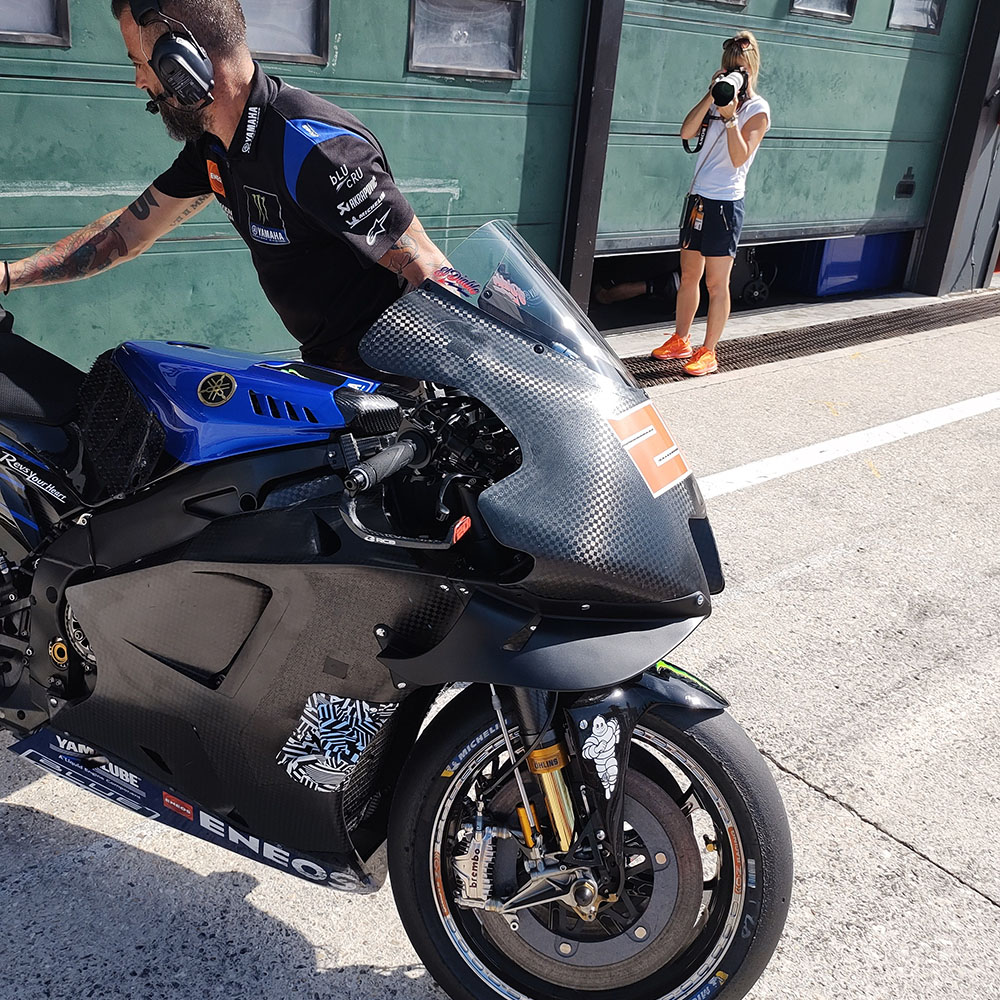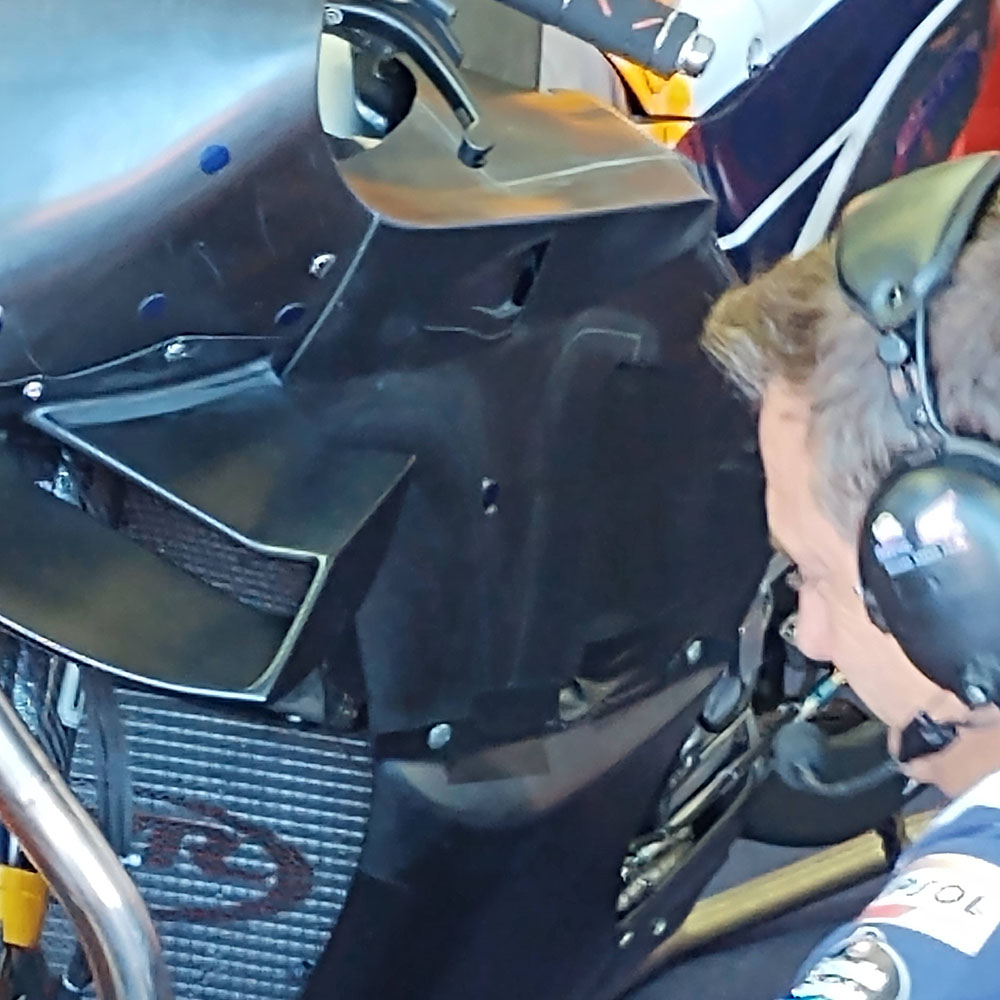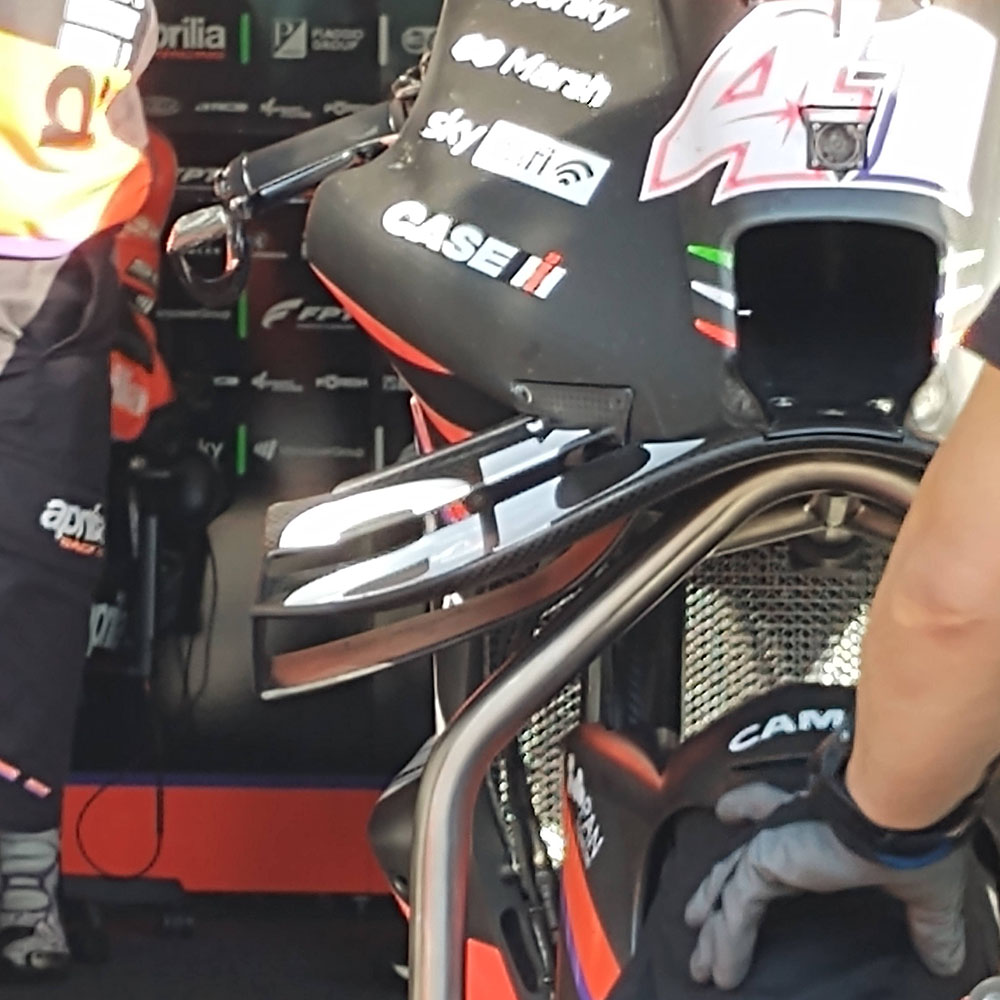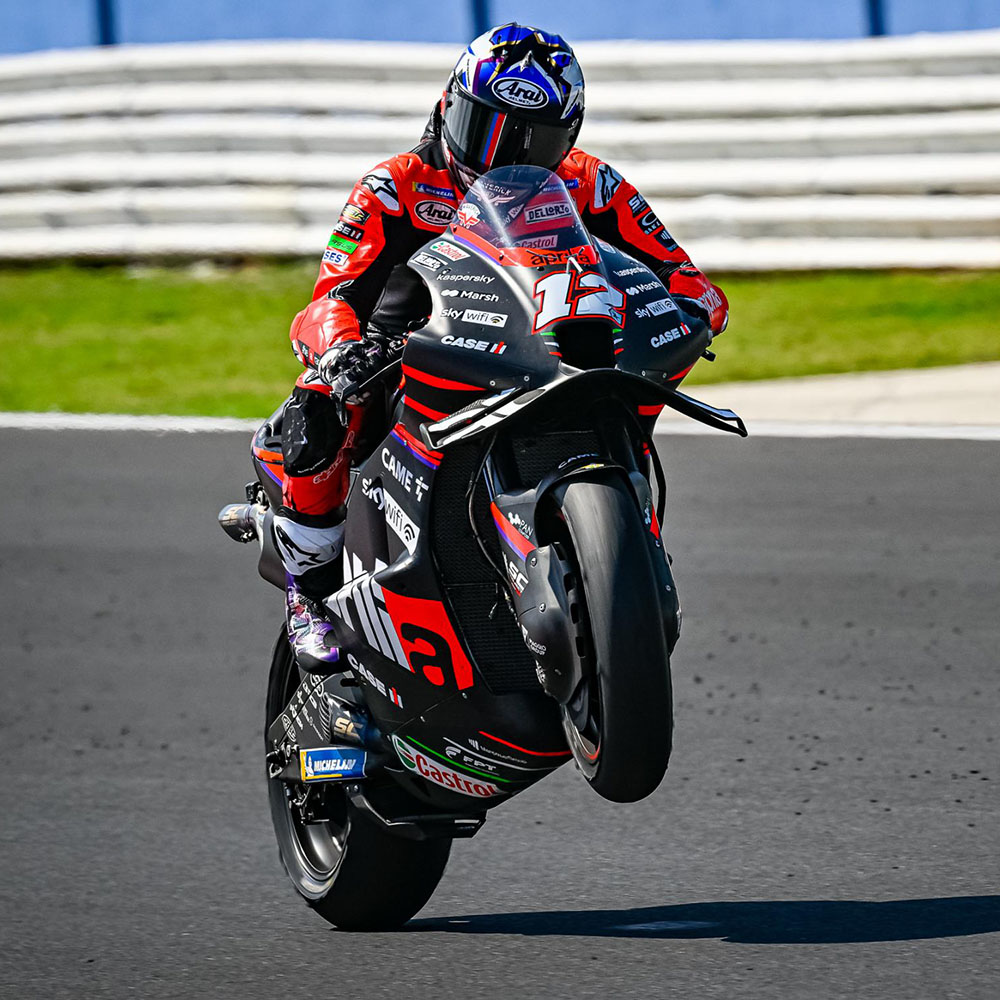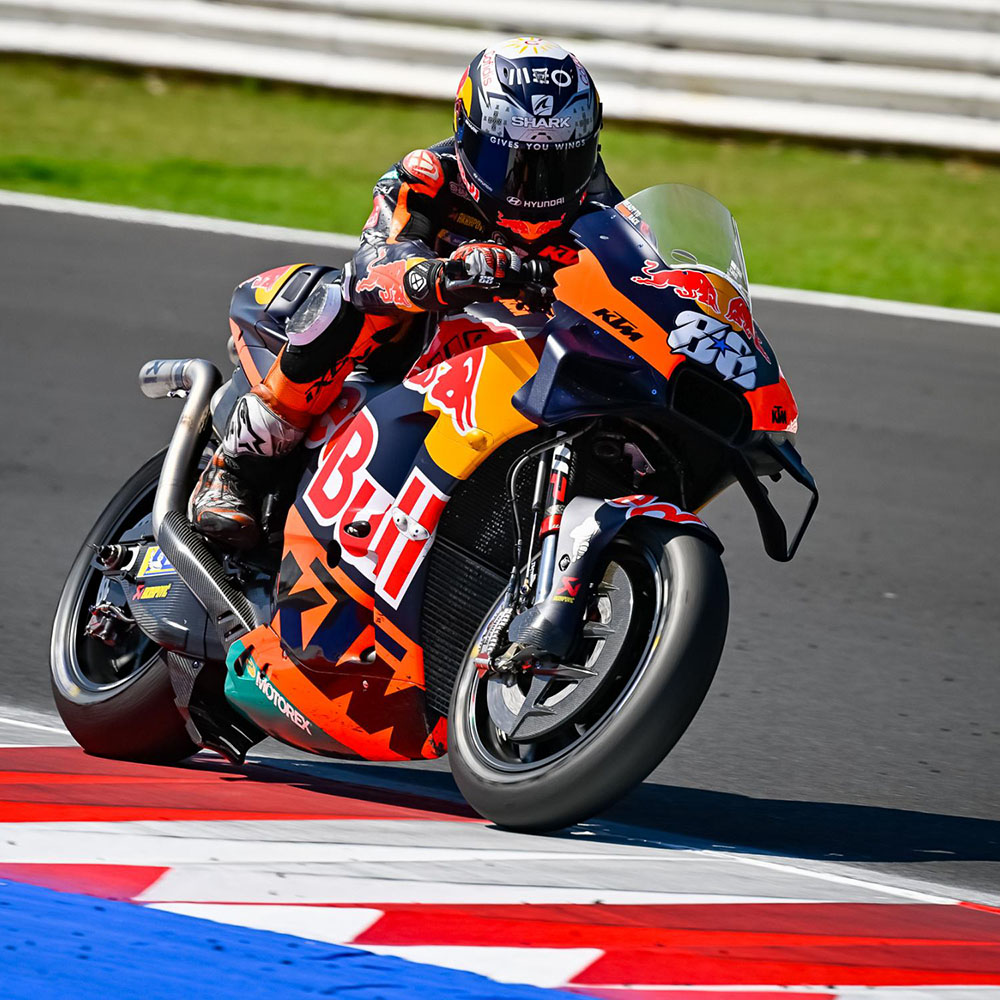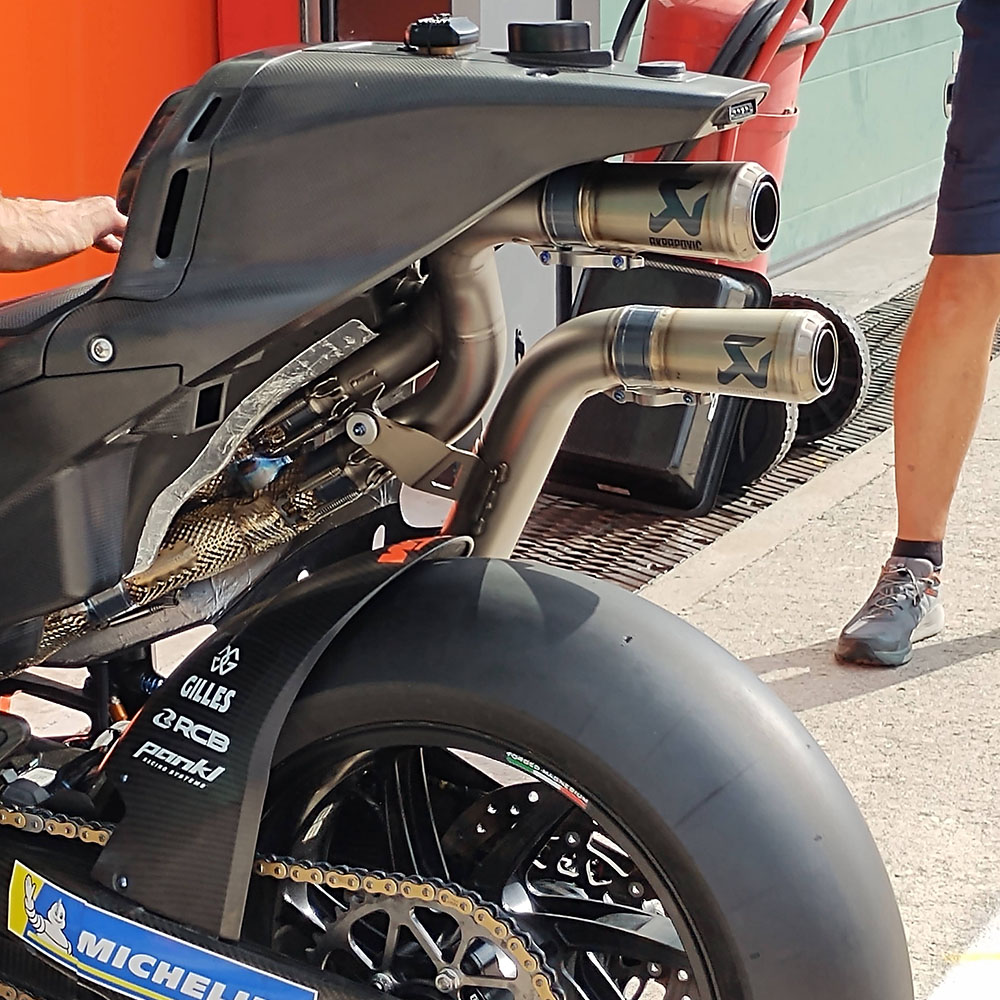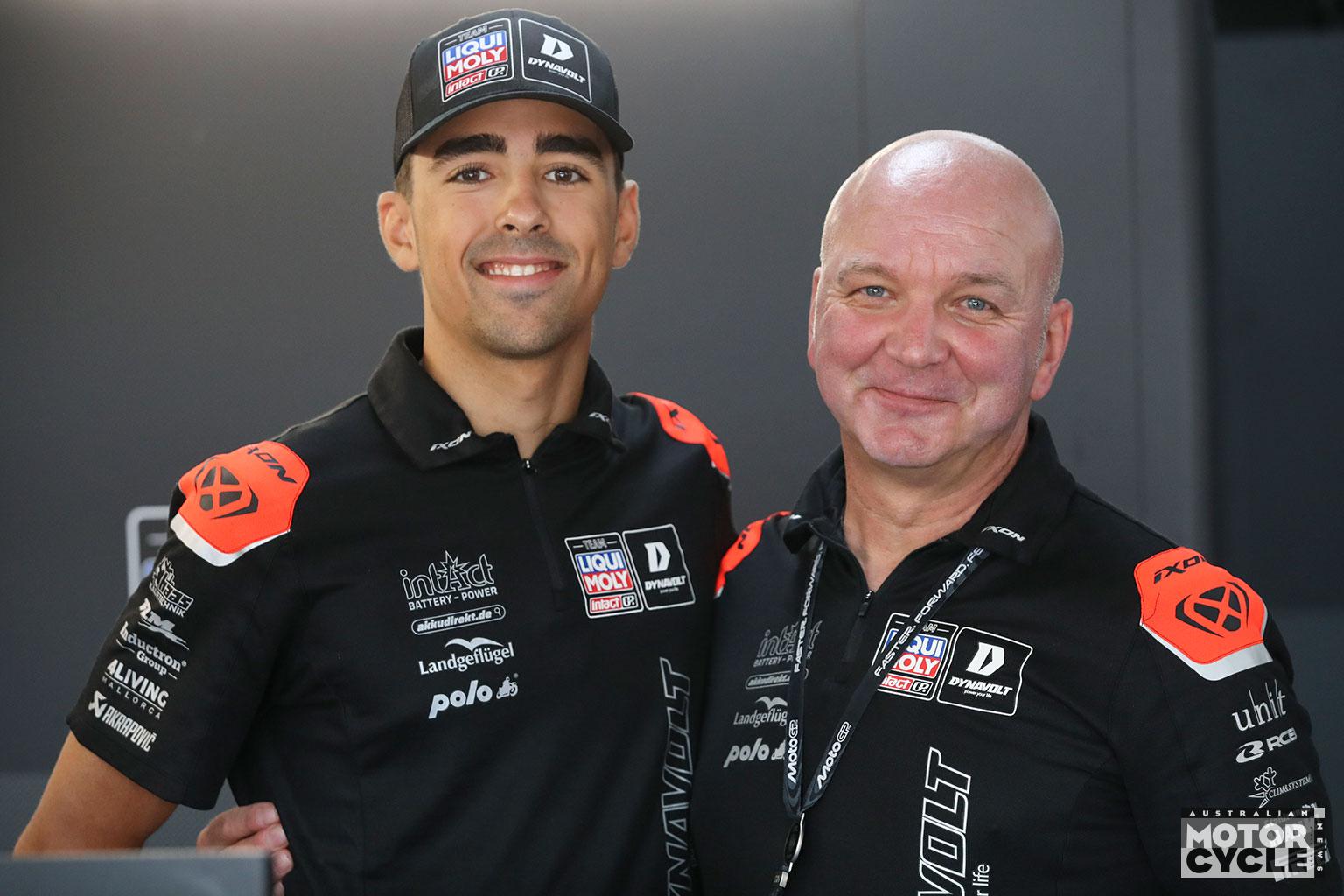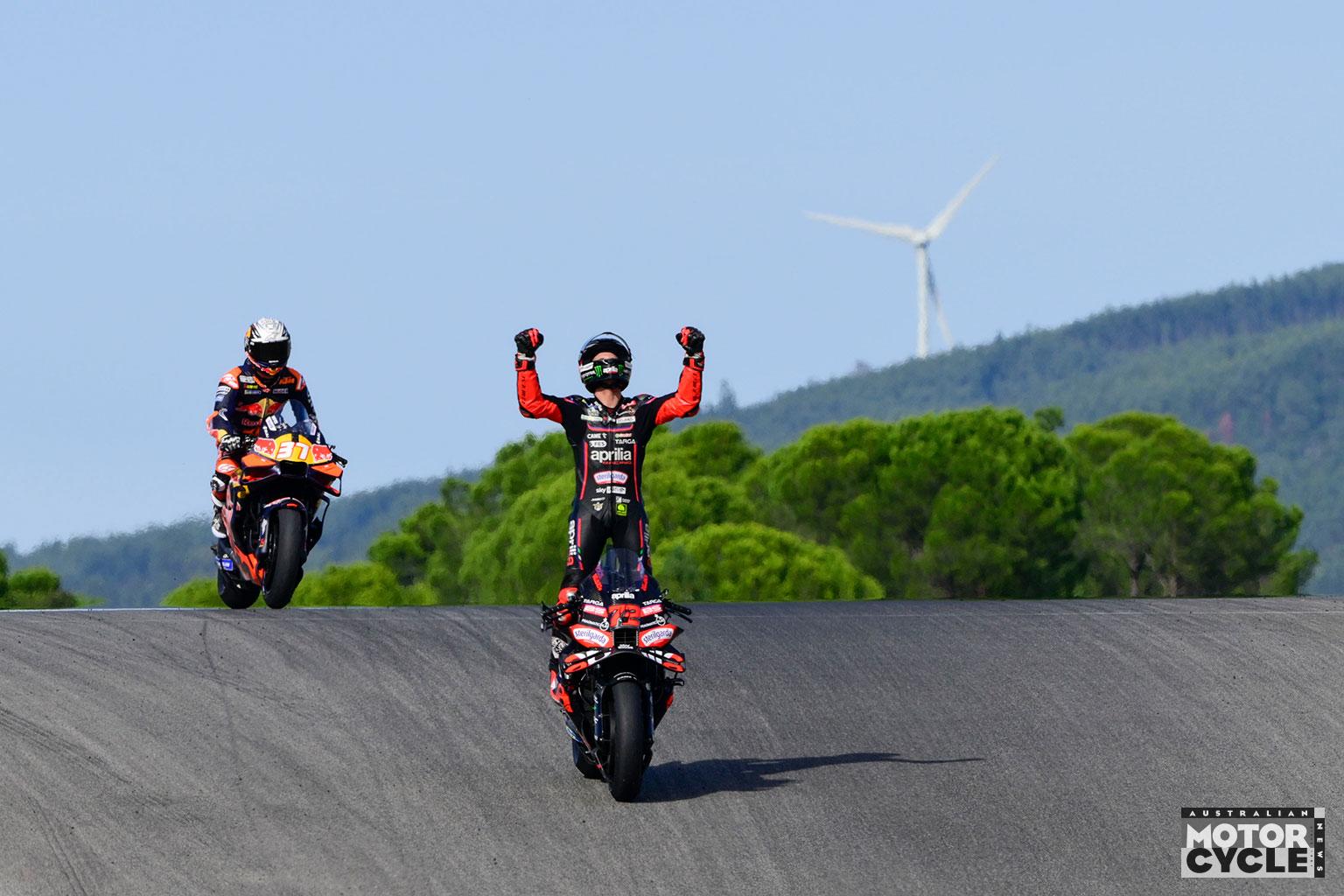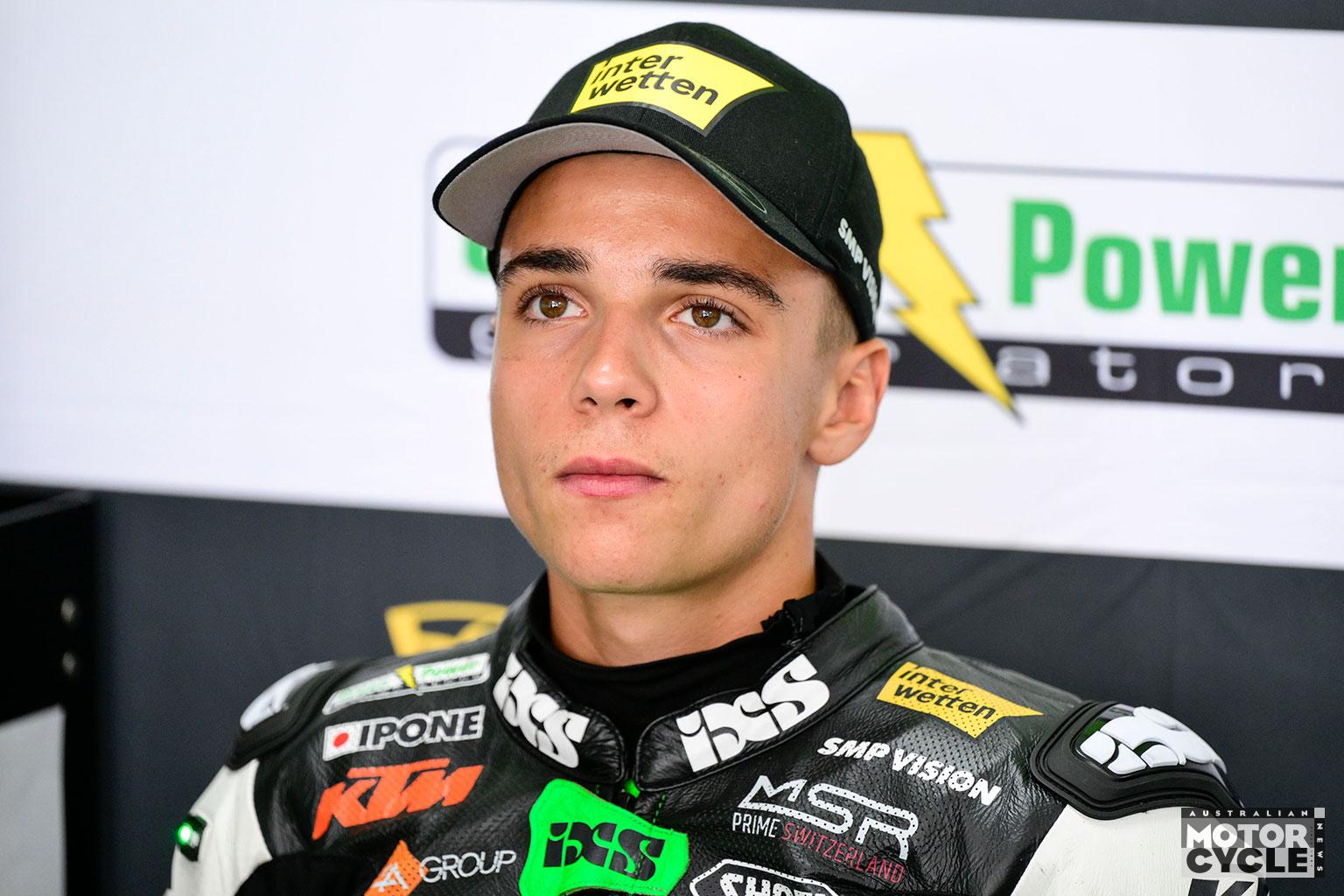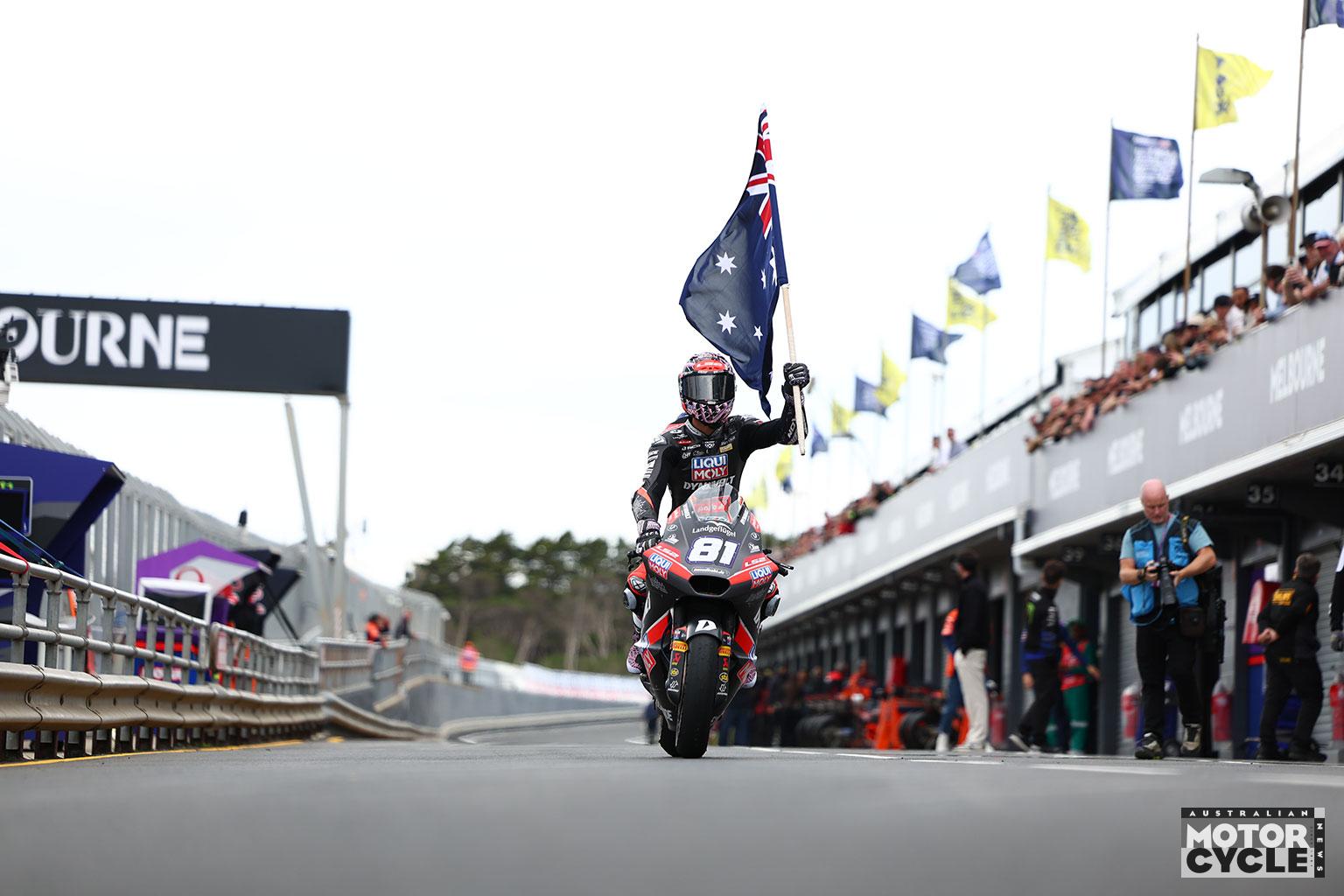After a shaky start, former 500cc GP rider Simon Crafar has become one of the most insightful pitlane reporters MotoGP has ever seen. We hit him up for what he spotted at the two-day Misano test
Times are always changing, but the changes we’ve seen in MotoGP recently are in areas we’ve never seen before. It has become clear that we are now in an era that in order to be competitive, it’s necessary to not just have a motorcycle with the full gamut of conventional strengths needed to succeed in motorcycle racing, you need a motorcycle that also has all of the modern devices and developments, and they need too be refined.
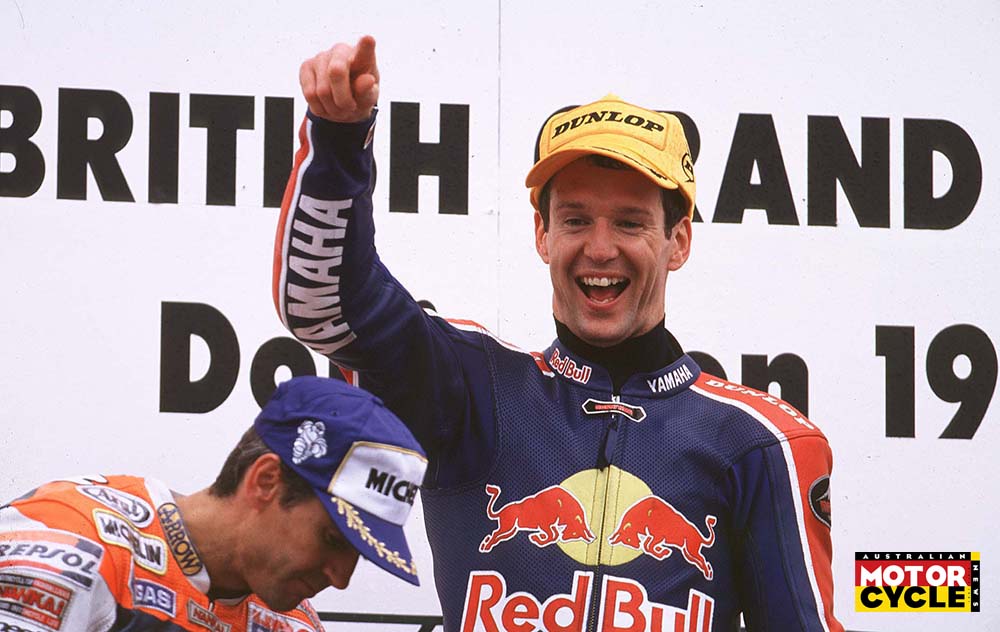
The technical strengths once required to be competitive in MotoGP were relatively conventional. You need an engine with as much power and torque as possible, and delivered in a very smooth smooth and linear way so that the rear tyre doesn’t break traction and/or cause instability. A good chassis and setup is a must, so that the rider can change direction without using more strength than he has available over a 45-minute race distance.
You need a machine that reduces speed during the braking phase as quickly as possible without locking the front tyre or overloading the front tyre’s construction causing it to deform, which in turn destroy’s steering performance. Crucially, good turning performance is needed both on and off the brakes, again allowing the rider to spend as little time possible in the turning phase, which means he can pick up the machine onto the wider, or drive area of the rear tyre sooner, meaning he’s on the gas and starting the acceleration phase earlier.
Motorcycle racing has been mostly about all these things (and a few others) for decades, and it is still very much the case, but the recent advent of aerodynamics and shape-shifting devices adds a whole new layer of complication. It is clear that Ducati has not only done a good job in all the traditional areas of motorcycle development that I’ve just mentioned, but it is clearly the leading the ‘race’ in the new modern areas of development, too.
If you watch its riders and machines into and out of the slow corners, they clearly have an advantage in both the braking phase and the acceleration phase. When stopping the machine from high speed into a low-speed corner, the Ducatis are so efficient that it usually prevents the opposition from launching an attack in this area. Then, after they are through the middle of the turn, the Ducati has an acceleration phase that is also far superior. And these two areas – hard acceleration and hard deceleration – are exactly where the new inventions were aimed at delivering improvements.
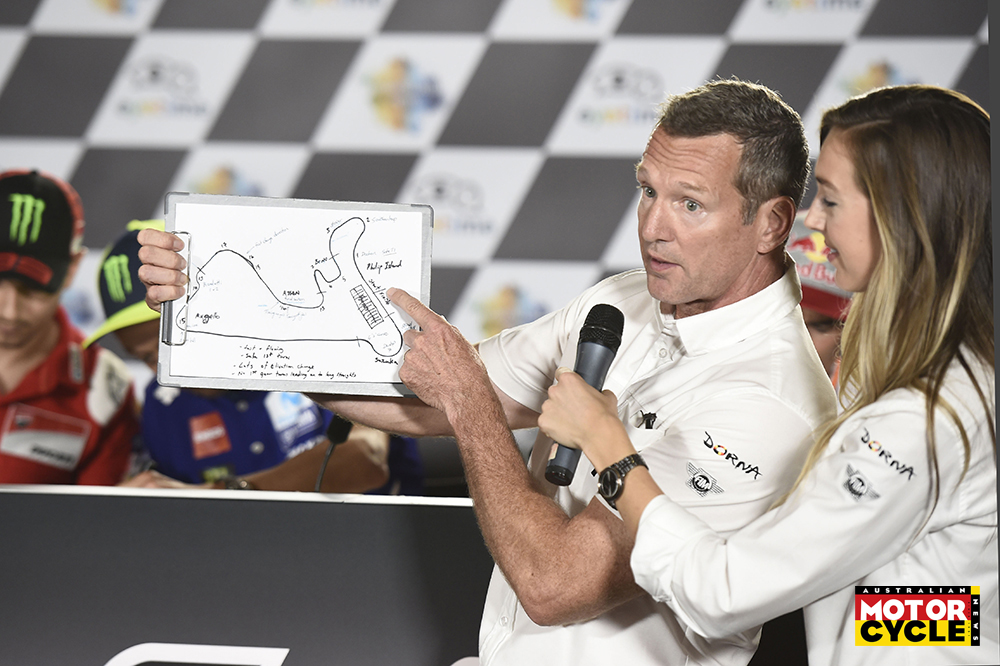
The shape advantage
During the turning phase, or mid corner, the machine’s geometry is crucial. One or two millimetres of change can make the difference between good turning and not good, but in the acceleration phase the turning is mostly over. At this stage, the device is activated lowering the rear of the machine a substantial amount, which lowers the centre of gravity and thus reducing wheelie. That means much more power and torque can be applied before the front end lifts, which results in much more acceleration, to the point where riders describe the effect as feeling like the machine is 30hp more powerful.
The timing is also important, as is the speed in which the rear-end of the motorcycle drops. I’ve seen at the Red Bull Ring in Austria the past two years that some of the riders on machines with less-refined devices struggle with wheelspin, and in some cases, stability in the acceleration phase. If the device is not activated at exactly the right moment the rider will not gain the full advantage. If the device does not drop at exactly the right speed it will not keep a smooth, consistent amount of pressure on the rear tyre during the transition, and pressure is needed to maintain traction. If traction is broken and spinning occurs, not only is acceleration lost but rear tyre wear is also increased. Wings added to the front and sides of the machines help the squatting devices by creating downforce, also helping to prevent – or at least delay – wheelie, and in turn allow more power and torque to be applied.
What’s more, both of these incredible new devices are also effecting the braking phase. Because the machine arrives to the end of the acceleration phase, let’s say the end of the front straight, with the rear of the machine still in a low position, so the initial braking can be applied much harder. Because just like wheelie is the limiting factor during hard acceleration, the rear lifting off the ground is the limiting factor during hard braking.
The rear being in a low position reduces the rear-lifting problem momentarily, just until it rises back into position. Also, when the rear is low, the wings’ ‘angle of attack’ is reduced, helping a better top-speed to be reached. Then, as the rear device extends back up to its original high position, the angle of attack of the wings is increased, helping to reduce the speed of the machine in the braking phase, while also aiding stability.
Now we are seeing aero devices appear on the tail units of the machines. I can only guess that these increase downforce and stability to the rear of the machine in this crucial braking phase.
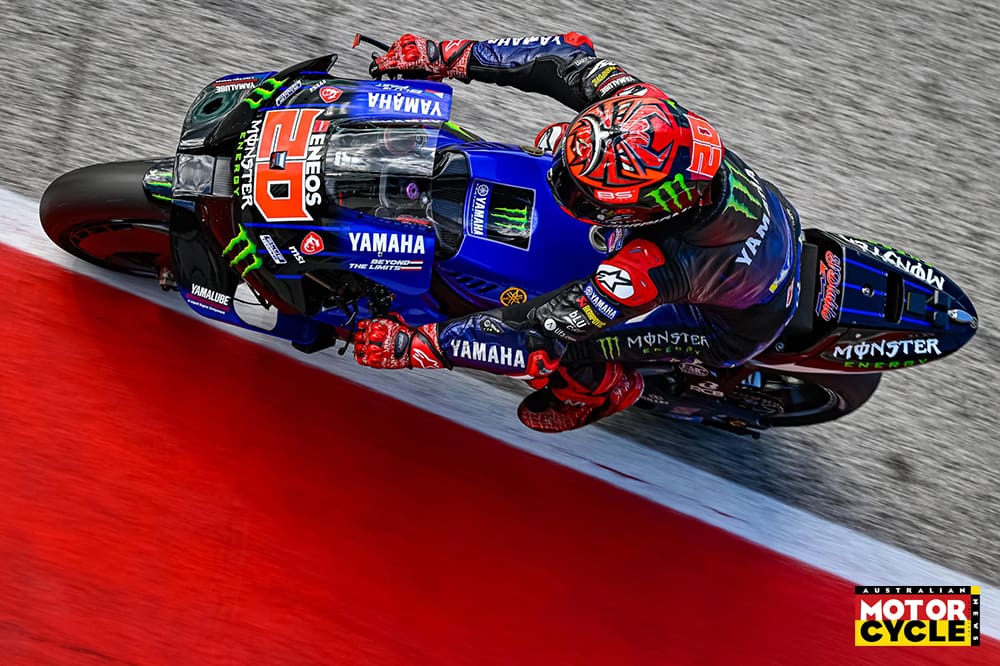
The whole package
I have explained all of the above because once it’s understood what is happening with the new technology and what effect it has on motorcycle racing, it’s easy to understand that simply adding more power or bigger brakes is not going to have the effect it once did in MotoGP, especially if a rival is in possession of not only being on an incredibly powerful machine but also a machine with the most refined aero package and devices.
This year we have witnessed admirable efforts by riders trying to fight with Ducatis, none more regularly than Fabio Quartararo. At the two-day Misano test, Yamaha arrived with what Fabio has been requesting from it for close to two years: more power. We all know that he’ll put it to good use in 2023, but will it be enough? Sadly, I don’t think so, because of the aero and device refinement reasons I have listed above.
Here’s a recap of what I spotted at the Misano test.
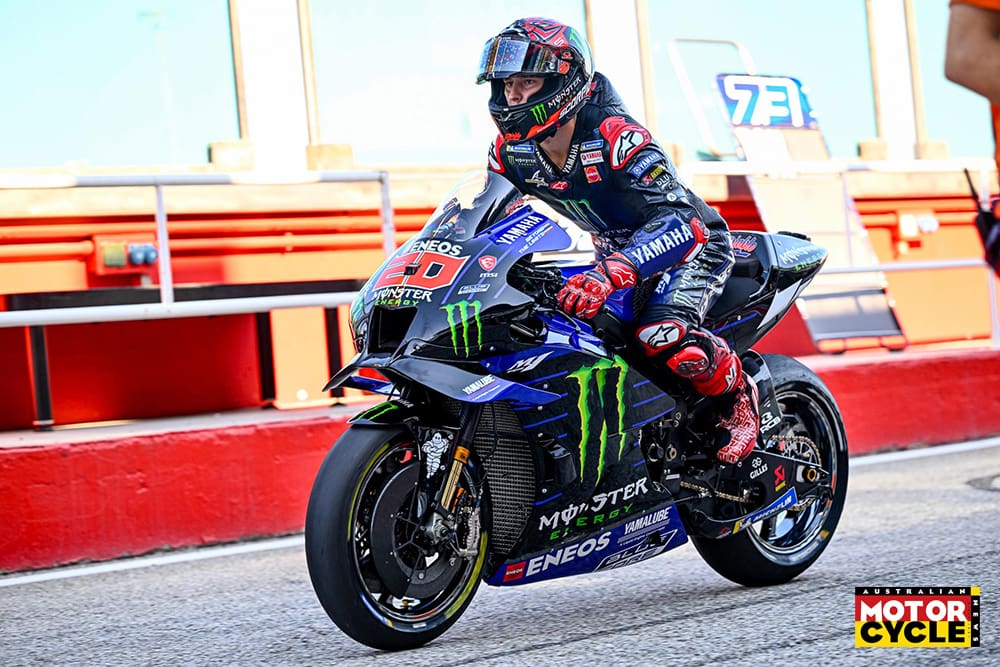
Yamaha – Need for speed
Yamaha has failed to improve its engine performance in the past few years when it had clearly been making efforts to, so all eyes were on Yamaha during what is essentially the first test of the 2023 season.
Monster Yamaha rider Fabio Quartararo has been riding the Yamaha like nobody else can, essentially making it look more competitive than it is. I don’t mean that it isn’t a great machine, just that it is down on power and does not have as refined aero and devices as the Italian machines. Part of the deal to get Quartararo to renew his contract with Yamaha, was the factory apparently made assurances to the Frenchman that it was committed to delivering what Fabio had been requesting. He has also been making it clear that he was no longer enjoying riding over the limit to try to be competitive. So it was essential for their relationship that Yamaha brought some power to the Misano test.
Early on day two of the test, it was clear for all to see that Fabio Quartararo leap-frogged many names in the top speed chart into an impressive second position. Reaching 298km/h on the rather tight and twisty layout of Misano is impressive. That does not tell the whole story though, as top-speed charts are notoriously inaccurate. They are often near braking markers at the end of the straight, so can sometimes reveal more about who is braking the latest.
In the case of Misano, it may not only show whose machine is fast, but who is the most confident to enter the incredibly-fast turn at the end. Either way. Fabio’s top speed had improved significantly, and when I enquired, his team told me that acceleration was also improved, something riders use much more often than top speed.
Fabio was smiling, revealing that both the new cassis and the new engine Yamaha had brought to the test were good. He said the engine is indeed more powerful and the chassis – although he had not gone faster on it – he liked it. A happy rider is a confident rider, and a confident rider is fast, so he is likely to use it again.

Yamaha also brought an updated aero package, the obvious difference being that the front wing no longer protrudes from under the air intake at the very front of the motorcycle like the 2022 version does. Instead, it is divided into a left and right wing, so more like an evolution of the 2021 and previous years’ wings. It is not clear exactly what difference this aero upgrade makes, but looking at it and knowing Yamaha’s way of working, it will be a small evolution rather than ra evolutionary update.
Engines are frozen during the year, but chassis are not, so this means Fabio could well use the new chassis at more races throughout the year. Let’s wait and see. Fabio has already homologated two front wings this season, the 2021 and 2022 versions, which means he has already used his one possible upgrade for the year so we won’t see this new front wing raced this year.
- New chassis: Quartararo likes the updated chassis, and it could well be used at some remaining events on the 2022 calendar
- More acceleration: The holy grail for most riders, and the 2023 Yamaha engine appears to have found another level
- More top speed: A very impressive 298km/h down the main chute at Misano, which was good enough for a stirring second place
- Updated aero: Other than the engine, the other major tweak was to the aero, with new left and right wings on the Yamaha
![]()
Honda – Marcing time
This Misano official test saw Marc Marquez back on the Honda for the first time since his latest operation. This is not only great for Marc but also in order for HRC to develop its all-important 2023 machine. With LCR’s Alex Marquez due to move to Gresini Ducati in 2023, and Repsol rider Pol Espagaro moving back to KTM, there is no point in letting them test 2023 parts as that would be giving their riders the opportunity to take the latest information with them to a rival manufacturer.
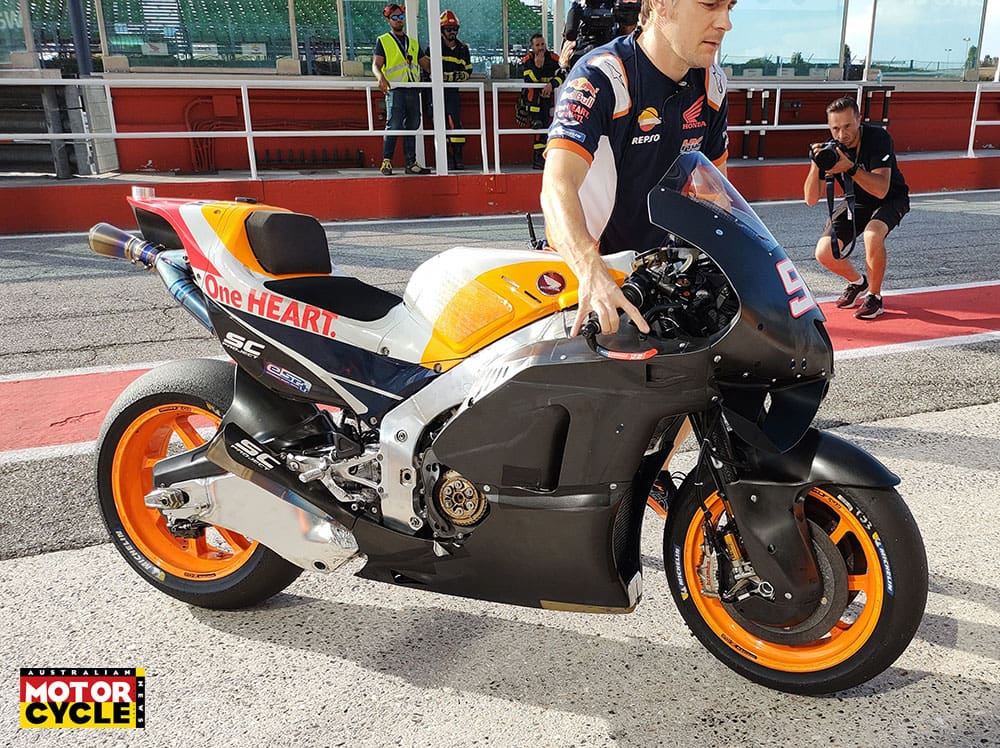
So like all the manufacturers did, only their confirmed 2023 riders got the 2023 parts and engines to test. If Marc did not test, only recently confirmed LCR rider Takaki Nakagami and HRC test rider Sefan Bradl would be able to assist the team with development.
Marc literally hit the ground running. He was fast in a short amount of track time, getting back up to speed on a RCV213V set to the same specification as he last rode it a few months ago. Then we saw him, Taka and Stefan use a new chassis and a new aluminium swingarm which was apparently supplied by Kalex. In terms of aero, we saw a new front wing (as well as two previous models), a new, wider Aprilia-style belly pan that the Italian factory has had success with, a Ducati-style ‘downdraft duct’ on the lower fairing and a new aerodynamic-looking front mudguard.
Like all manufacturers, Honda would have been testing early versions of its 2023 engines, but like Yamaha, KTM and Aprilia, they were definitely upgrades to the 2022 engine rather than a completely new engine. I know this, because they looked and sounded no different to what they are currently racing. Engine power is sufficient, but Honda riders have complained about the performance in almost all other areas; of trouble stopping the machine well in the braking phase, the lack of front feel causing crashes, a lack of turning and lack of rear grip on the exit of a corner.
Honda needs Marc and all other hands on deck if it is going to have any chance of fighting its way out of the hole it has currently found itself in. In the modern MotoGP era, Honda has never been in a worse position technically, so it will be very interesting to see what the Japanese giant can do to fight back before the 2023 season commences.
- Aerodynamic upgrades: A new front wing, as well as a focus on the belly pan, mudguard and lower fairing
- New Kalex swingarm: The dominant chassis in Moto2, and now helping out HRC with the aluminium swingarm
- Updated engine: Primarily focused on the 2022 mill, early versions of the 2023 engine would have been tried in
Misano
![]()
Ducati – Refining the beast
It was not immediately obvious what Ducati was testing, I had to look long and hard. The first thing I saw was a new device on the clutch lever of one machine of the Prima Pramac pairing of Jorge Martin, Johann Zarco and test rider Michele Piro. In my mind it can only be for use at the start, because riders do not need the clutch at any other time during the race. And I asked a few different engineers and they were of the same opinion.

Then I spotted that many of the Ducati riders had two different chassis to test, what’s more Gresini Ducati rider Enea Bastianini and Lenovo Ducati rider Pecco Bagnaia had carbon-fibre reinforcements on one of their chassis – clearly Ducati was testing different chassis and stiffnesses. Then the riders let slip that they’d tested a different aero package, too – I’d missed it completely. I put this down to the fact that Ducati’s last aero upgrade was genuinely hard to spot because the difference was so subtle, and I think this new one must be another slight tweak – either that or I’m loosing my touch! This points to one obvious thing though; Ducati’s aero is good and it does not need to be changed completely, just adjusted slightly.
I then saw a sensor fitted to the right-hand side of Piro’s bike. This is one of at least three different ways Ducati calibrates its electronic control systems. Apparently it is very difficult to measure the exact lean angles of the machine at the different points around the circuit, and it is crucial to know the exact angle in order to know, for example, exactly what amount of torque is safe to deliver to the rear tyre. The devices used on the machines have some error in their measurement. But apparently by calibrating the system using the laser lights we sometimes see on the Ducati bikes at tests, it’s the most accurate way, making the system more refined.
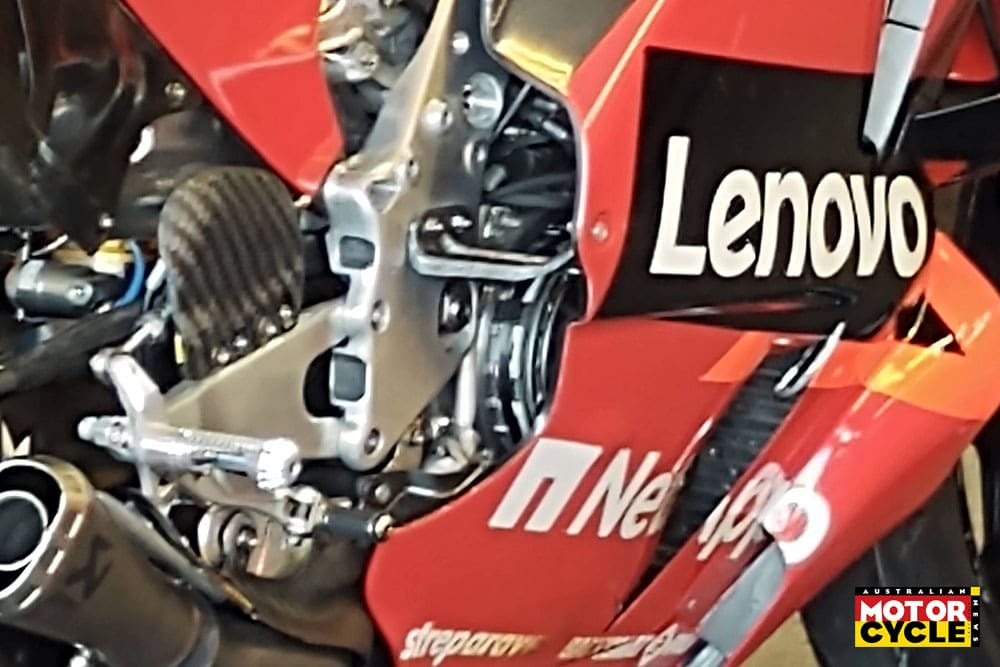
Ducati, like everyone else, was testing early 2023 upgraded engines. Ducati’s usual way of working is to test all parts individually (chassis and engine updates) then assemble all the best parts together on one one machine for riders to test, aimed at being the following years factory Ducati. I guess we will see this machine either late in 2022 at Valencia test or early in 2023 at Sepang. Ducati is the performance benchmark in Motogp right now. The opposition will be hoping that they don’t move the goalposts again in 2023.
- Clutch lever / start device: The Ducati’s already a rocket off the start, but will this go to another level in 2023?
- Engine updates: Testing individual parts before the ‘best of the best’ come together to form the basis for a new engine
- Aerodynamic tweak: No wholesale changes, but more incremental improvements to an already grand package
- Chassis update and stiffness: Carbon-fibre chassis ‘reinforcements’ were put under the microscope by Ducati
- Electronic control: Refinements to the way that lean angles are measured around various points of the circuit
![]()
Aprilia – Another step
Aprilia is the other manufacturer to thrive in this new era of MotoGP. Together with Ducati, has understood the aero and device development race and made big steps forward in both areas. Aprilia is seen by most as a close second to Ducati and, occasionally at a circuit that suits the bike, even the best!
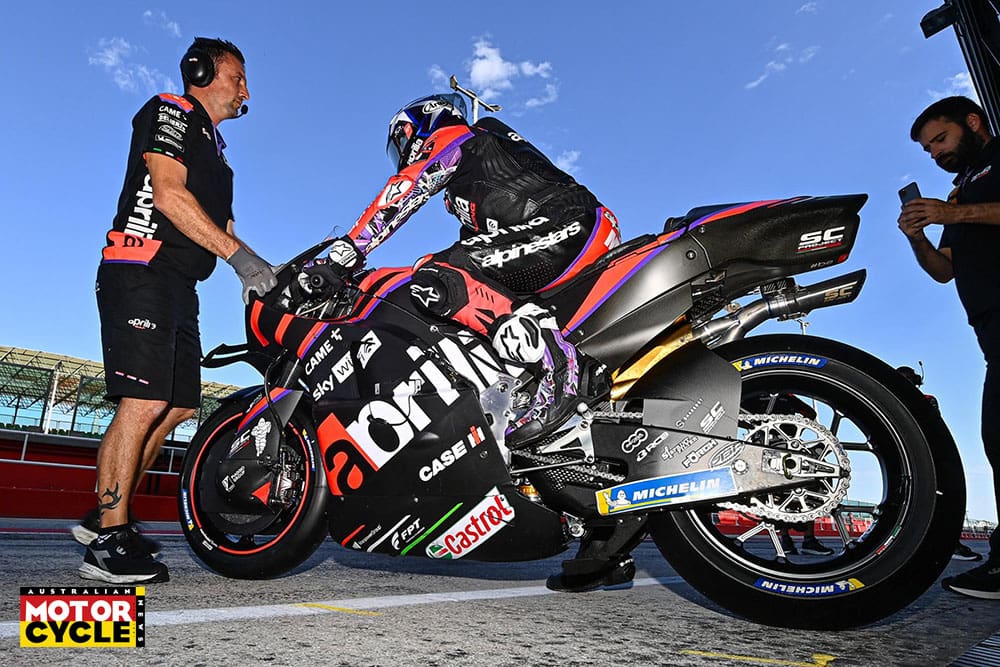
This is extremely impressive work from the relatively small manufacture from Noale in Italy. At Misano, Aprilia did not rest. We saw the team testing a new chassis with a different stiffness and apparently lighter in weight. We saw factory duo of Maverick Vinales and Aleix Espargaro, as well as test rider Lorenzo Savadori, testing a new front wing which looked exactly the same as the front wing they have been racing – until you looked underneath and saw it was a double wing, like a biplane.
The factory’s trademark wide, lower fairing, which has been on the Aprilia machines in recent races and has apparently brought stability to the faster corners, was being tested with some small modifications and extensions. The team was of course testing 2023 engines with next year in mind.
Aprilia has done so well this year that it has lost any allowed ‘concessions’ for next year. This means each rider will the restricted to just seven engines for the season, not nine like they’ve been allowed until this point. Two less engines means more kilometres on all engines and more reliability is therefore needed. Aprilia isn’t worried about losing their concessions, though, telling me that the team has been planning for this for some time by actually running higher kilometres than necessary in preparation for this moment.

If Aprilia can make just a small step forward again in 2023, even half of what it has managed in the either of the previous two years, Aprilia will be seen as equal to the best machine on the grid.
- Double-layer front wing: A double-wing just like a biplane, as Aprilia’s holistic approach to aero goes up a notch
- Modified lower fairing: Only smaller modifications to the wide and low fairing this time out
- New chassis and stiffness: A chassis that is said to be stiffer and lighter, but the exact details were scant
![]()
KTM – Closing the gap
With three of their four riders moving onto other manufacturers or series next year, the testing of new items was left to their only remaining racer Brad Binder and successful test rider Dani Pedrosa.
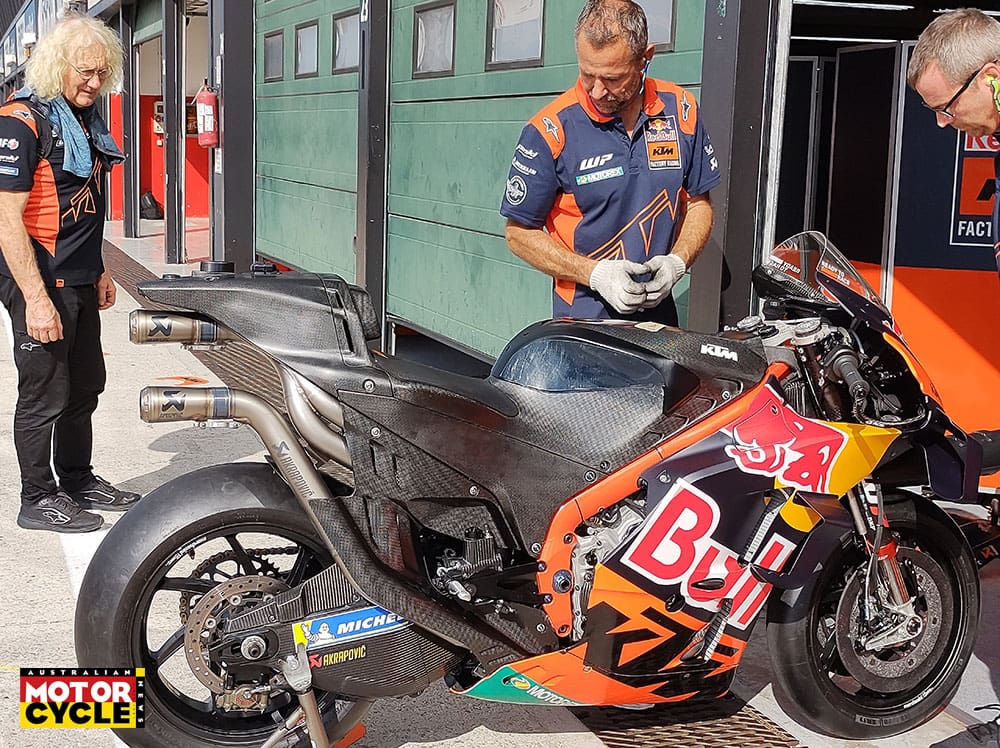
Very little was visibly different, apart from a new-shaped seat unit sitting above new-shaped exhausts. On day two, it was clear to me that Brad Binder was testing engines for 2023 and giving feedback on them. I asked what else KTM was testing and I was told the strategy was simply trying to squeeze all they could from what they currently had. You only have to look at Jack Miller’s rise in competitiveness since he found a better riding position and weight distribution on his Ducati at the Barcelona test, to understand that this is not a waste of time. And while Red Bull KTM rider Brad Binder was again outstanding in the Misano GP, I don’t think a couple of small improvements will see him fighting for the win, but he’ll be closer to it.
When KTM riders speak about what they need to improve, their words are uncannily similar to the Honda riders’ descriptions of what they need to be more competitive. At Silverstone, I spotted Red Bull Formula 1 technicians in the Red Bull KTM factory garage, which leads me to believe KTM is in the process of a huge effort to try close the gap in 2023, and it only makes sense to get the help of F1 Aero experts.
- Newly shaped exhausts: One of only a couple of visual differences to the current RC16
- New 2023 engine: Factory rider Brad Binder was hard at it testing 2023 engines on day two
- Refinement of current parts: Maximise the now: it’s worked for Miller at Ducati, and KTM is adopting the same approach
![]()
Suzuki – Sayonara
Suzuki only participated the first of the two-day test at Misano. With Joan Mir injured and no 2023 season planned for the Hamamatsu Corporation, there is very little point doing tests on engine development. Alex Rins ran through the setup changes he and the team wanted, and MotoE world Cup winner Dominique Aegerter got to test Joan Mir’s GSX-RR and performed well.

I have heard there are a few new parts on the way from Japan, where they had been working hard before the news came that 2022 will be the finish for Suzuki. This is great news for their riders as the Suzuki has been ever so slightly left behind in 2022.
Suzuki has made a gallant effort over the past few years both as a manufacture and as a team. The 2020 MotoGP world champions will be sorely missed.
- Setup changes: With no big ticket items to test, Rins did all he could to fine-tune the Suzuki for the balance of 2022

